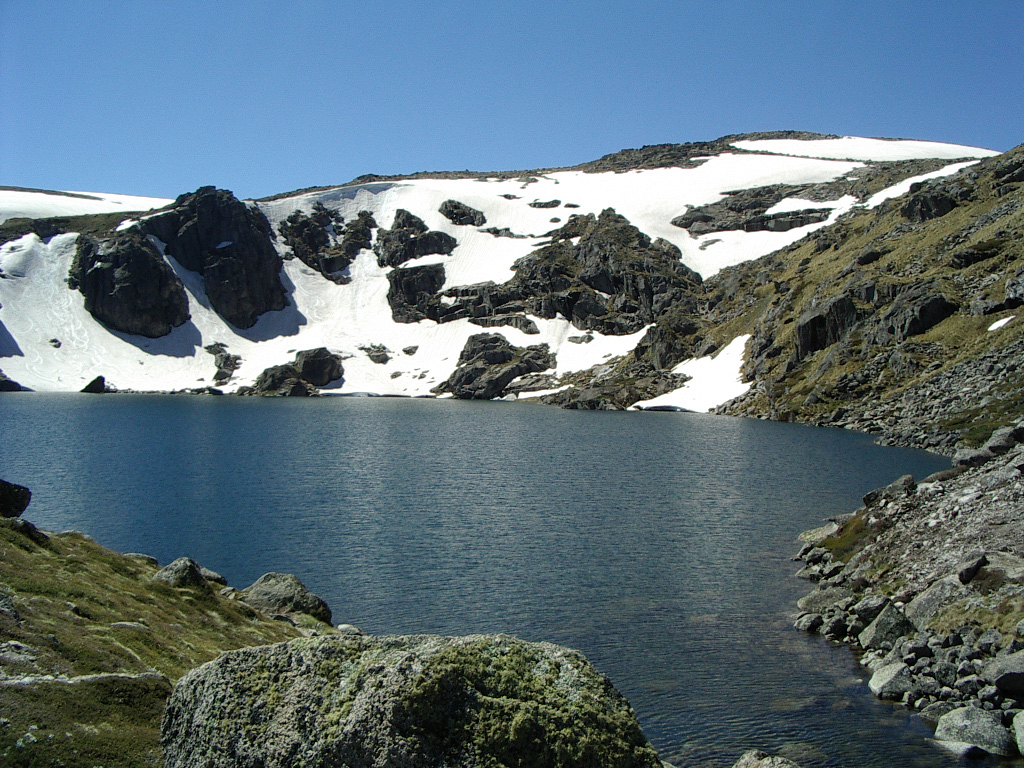
Sampling a giant boulder for exposure dating

Glacially excavated Blue Lake in the Snowy Mountains of Australia
The earth is continually bombarded with extremely high-energy (GeV) particles originating from outside our solar system. These ‘cosmic rays’ produce a variety of nuclear reactions in the atmosphere and within the Earth’s surface, resulting in the creation of cosmogenic isotopes. Exposure dating is based on the principle that cosmogenic isotopes accumulate in surface rocks as a function of time. After a geological process freshly exposes a rock surface, these cosmogenic nuclides build up at a known rate. Measurement of their present-day abundance, in conjunction with knowledge of the rate at which they are produced, allows an ‘exposure age’ of the surface to be determined.
Concentrations of cosmogenic isotopes in typical earth materials are incredibly low, being less than one in a million million (10-12) relative to their stable counterparts. Hence, the ultrasensitive technique of accelerator mass spectrometry (AMS) is required. The powerful and versatile 14UD tandem accelerator at ANU has proved to be one of the best tools in the world for such measurements.
The long half lives of 10Be, 26Al and 36Cl make these cosmogenic nuclides useful for studying landscape evolution on geological timescales (103-106 years). In particular, exposure dating has revolutionised the study of the history of glaciers and ice sheets. By directly dating glacial debris and eroded bedrock, the timing of the advance and retreat of the ice (a sensitive indicator of climate) can be determined with unprecedented reliability. Current projects include using this technique to take a fresh look at the history of glaciation and climate change in Australia, New Zealand, Papua New Guinea and Spain.
Studies of relics of the last Ice Age in the Snowy Mountains and Tasmania have led to a complete revision of the glacial history of Australia. Hypothetical ideas about glacier extent and its timing that stood for nearly a century have been replaced with a robust chronology placing Australia into a global context. It transpires that there was not just one but at least four major advances of glacier ice during the last 70,000 years. The coldest part of the last ice age was about 20,000 years ago and only lasted a few thousand years. The ensuing global warming is the greatest in recent geological history. On the basis of the altitude of the ice age landforms, mean temperatures around Canberra are about 9°C warmer today. This research provides an important baseline from which to assess climate variability and future climate change.